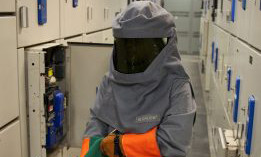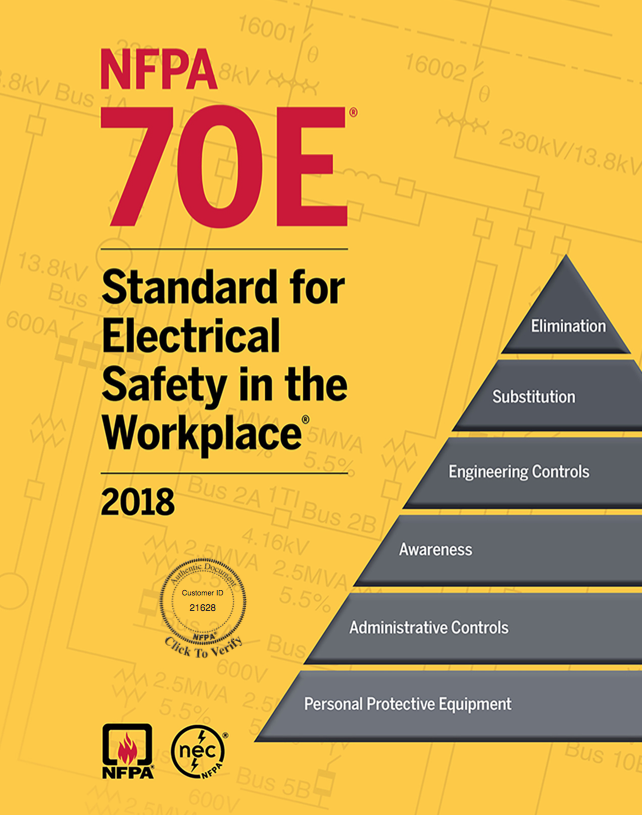 One Arc Flash Suit For The Entire Maintenance Department Is A Big Mistake
One Arc Flash Suit For The Entire Maintenance Department Is A Big Mistake
Avoiding tight fitting clothing is essential if that clothing is being worn to protect you against the thermal effects of an arc flash. NFPA 70E states that the worker must avoid tight-fitting arc flash gear and that loose fitting clothes provide more thermal protection because of the “air spaces.” I often see and hear about companies adopting the policy of one single arc flash suit should take care of all of our needs. The maintenance department can share the same suit. The policy of one arc flash suit for the entire maintenance department is a big mistake.
An arc flash suit is the heavier arc flash protection needed in incident energy exposures generally above 25 cal/cm2. Arc flash suit hoods are required for any energy above 12 cal/cm2. The issue is this. If one of the maintenance people in your group is 6 foot 4 inches tall and weighs north of 300 pounds and another worker is 5 foot 7 inches and weighs 160, they can’t wear the same suit. But, I have seen situations where this is precisely the case. It is an impossibility that two people with substantially different body types can wear the same suit, and for safety reasons, they shouldn’t be wearing the same suit.
The reason an ill-fitting suit is a problem is that loose fitting arc rated clothing gives you more thermal protection than tight clothes, and, in addition to that, the wrong size suit can obstruct movement preventing you from completing the task safely. What if a major league baseball team all had to wear the same size uniform? I don’t think the fielding, throwing or hitting would be as good because their movements would be restricted. Go Cubs. I am here to argue that an arc flash suit is more important than a baseball uniform. To ensure that everyone is fitted correctly and the equipment properly stored and cared for, professional teams employ an equipment manager. Maybe your facility needs an equipment manager. I know you aren’t working with the same equipment budget as the Yankees. But how nice would that be?
Besides restricting movement, sleeves that are too short can be an issue if you extend your arm and your sleeve no-longer reaches your hand; subsequently, your wrist and forearm become exposed. 70E requires that the arc flash clothing provides full coverage.
One of my favorite comedy scenes in a movie has to be the “Fat Guy In A Little Coat” scene in Tommy Boy. Not surprisingly, small of stature, David Spade’s sports coat did not fit Chris Farley, with hilarious results. Funny in a movie, not amusing with PPE.
Manufacturers and distributors, on their websites, have detailed sizing charts for assisting you in getting the arc flash suit that fits your body. Head to toe measurements are included, and there are different sizing charts for men and women. Most want your chest, waste, height, other manufacturers need your arm length, inseam, among other measurements. One manufacturer states in the sizing instructions that workers under 5’8” and taller than 6’4” need to have a custom suit. Other manufacturers offer sm, med, LG, XL, XXL, XXXL. You would have to figure where you are on this type of a scale.
Here are links to a couple sizing charts: Oberon National Safety Apparel
Arc flash suits are expensive, and I certainly understand why companies want to limit the costs of implementing NFPA 70E. Your company needs to develop a plan for ensuring all qualified workers have the appropriate suit to wear.
Arc flash suits come in a variety of types. You can purchase bib overall type pants and an accompanying jacket and hood. There are regular type pants, with a jacket and hood. It is important that you shop around, look at many websites of manufacturers and distributors. Look at all of the sizing options and determine what is right for you.

A comment I have heard on more than one occasion is, “I don’t want to wear an arc flash suit that someone else has been sweating in.” Good point, I wouldn’t either. Let me state right now, that in my opinion, the only live work we should be doing in an arc flash suit is verifying zero volts during our live-dead-live test required for lockout tagout. Our first step in providing protective measures after we have completed a risk assessment is the elimination of the hazard. Working de-energized. This, of course, will require us to establish an Electrically Safe Work Condition (ESWC). So hopefully no one is wearing an arc flash suit for an extended period of time. I do realize on really hot and humid days you don’t have to wear them very long before you are sweaty.
Arc flash suits have to be stored in such a way that they won’t become damaged. A dedicated cabinet, storage closet or bags will help limit the damage. Some people turn them inside out to help them dry and avoid mold and the suit getting stinky. One helpful accessory that is available is a cooling unit which is a blower that mounts to the suit and provides air flow throughout the suit as you wear it. Another accessory is cooling vests designed to be worn under an arc flash suit.
Your facility needs to have suits in various sizes so all qualified workers are protected through the range of arc flash exposures. This is an expensive garment performing the critical function of protecting the wearer from a high energy arc flash event. A lot of thought needs to go into the proper sizing of arc flash suits and how many we need to buy.
Our Training That Addresses This Issue



